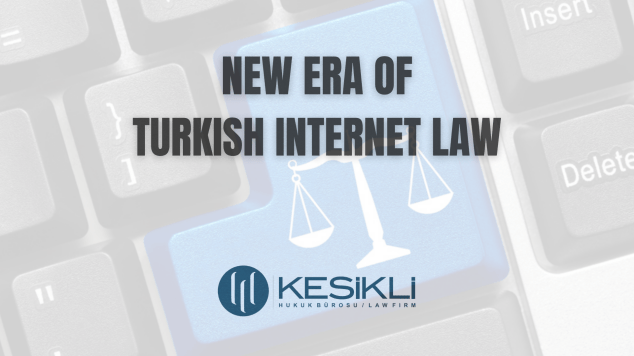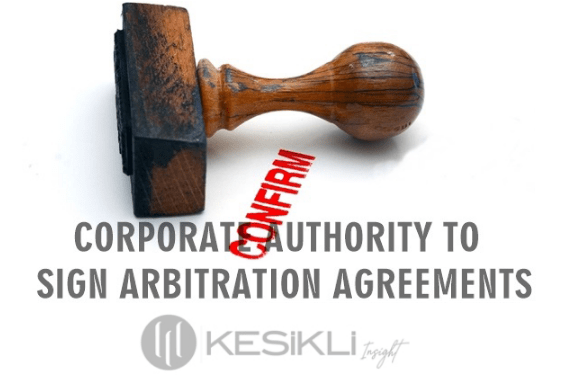Article 6 of the Code of Industrial Property Law No. 6769 ("SMK") stipulates that "If there is a likelihood of confusion, including the possibility of association by the public, due to the identity or similarity of a trademark applied for registration with a registered or previously applied-for trademark and the identity or similarity of the goods or services it covers, the application shall be rejected upon objection."
According to this provision, for confusion to be acknowledged, two conditions must be met: the identical or similar trademark must be intended for registration for identical or similar goods or services, and there must be a likelihood of confusion among the public. Thus, not only is the similarity between the trademarks sufficient but also the similarity in terms of goods and services classes must be present, leading to a likelihood of confusion, including association, among the public. In such a case, if confusion exists, the application for the registration of the trademark will be rejected.
The determination of similarity that causes confusion involves a comparative assessment of the essential characteristics of the two trademarks, and in this evaluation, the trademark must be considered as a whole. If the signs belonging to the trademark are examined by dividing them into parts, and if signs that do not have importance alone or have no distinctive power alone are identical or similar, confusion cannot be claimed.
In assessing the likelihood of confusion, a holistic approach must be adopted by considering all the specific features of the concrete case. As a principle, the evaluation begins with the similarity of goods and services. While assessing the similarity of goods and services, all factors such as the average consumer ("public") group of the contested goods and services, their natural characteristics, the purpose of use, price, purchase frequency, production distribution, sales channels, and locations, competition, and whether there is a relationship of substitution or complementarity should be considered. In this article, the criteria that need to be evaluated as a whole to determine the likelihood of confusion will be discussed under three separate headings:
1. Evaluation of Similarity Between Trademarks
In determining whether two trademarks are similar, the visual, auditory, or conceptual similarities between the trademarks are considered. The degree of visual, auditory, or conceptual similarity should be evaluated based on the nature of the goods and their presentation in the market.
- Visual Similarity: Visual similarity arises when word or design trademarks contain similarities in appearance.
- Auditory Similarity: Auditory similarity arises when word trademarks contain similarities in pronunciation. In some cases, the determination of auditory similarity alone may be sufficient to consider the trademarks as similar. However, if auditory similarity is not adequately supported by visual similarity, it is also possible not to evaluate the trademarks as similar.
- Conceptual (Semantic) Similarity: Conceptual (semantic) similarity arises when word or design trademarks contain similarities in terms of the meaning they convey.
For example, in the decision dated 01.03.2022, File No. 2020/7088 and Decision No. 2022/1371 of the 11th Civil Chamber of the Supreme Court; in the case where the cancellation of the decision of the Board of Inspection and Survey (“YİDK”) and invalidation of the trademark was requested with the claim that there was a possibility of confusion of the registered trademark with the phrase "Tom Yum" and with the trademark application with the phrase "yum yum crunchies potato sticks + shape", although the local court decided to dismiss the case since there was no possibility of similarity and confusion between the trademarks, in the examination made in terms of the party trademarks, since the phrase "yum" is the main distinguishing essential element in both trademarks, it is administrative between both trademarks in the average consumer mass,it was ruled that there is a similarity that may lead to the assumption that there is an economic and business connection and that there is a likelihood of confusion.
However, it should be noted that the presence of a common word between trademarks does not inherently imply visual similarity, and even if there is a common word, any differences in the signs can eliminate the likelihood of confusion between the trademarks*. (See the decision dated 05.09.2023, File No. 2022/1309 and Decision No. 2023/4641 of the 11th Civil Chamber of the Supreme Court.)*
In this respect, in the precedent decision of the 11th Civil Chamber of the Supreme Court dated 09.09.2019 and file number 2018/3515 and decision number 2019/5135, it was ruled that there is no likelihood of confusion on the grounds that the phrase "DERYA", which is present and common in the trademark "DERYA" and the trademarks "DERYA FINGER" "DERYA TON BALIĞI AY ÇİÇEK YAĞLI+Şekil " and "KAPTAN-I DERYA", does not cause a similarity between the trademarks that would cause confusion due to its low distinctiveness.
Therefore, in determining whether the trademarks are similar, the issues of whether there is visual, auditory or conceptual similarity between the trademarks should be considered as a whole according to each concrete case.
2. Assessing whether the Goods or Services are Identical or Similar
In determining similar goods or services, the provisions of the Nice Agreement and other relevant legislation and the list of goods and services covered by the sign for which the trademark is sought to be registered may be used. However, while making the comparison, it would be appropriate to interpret the concept of "similar goods or services" in a broad manner, taking into account the protective function of the provisions of the SMK for trademark owners, and to provide this protection against all other goods or services that function similar to a good or service in the eyes of its customers.
As a matter of fact, in the decision of the General Assembly of the Supreme Court dated 18.05.2022 and file number 2020/659 and decision number 2022/678, it was accepted that the phrase "ZORLU" in the trademarks "ZORLU" and AYHAN SEYHAN ZORLULAR" is similar enough to cause confusion or likelihood of confusion in the eyes of average consumers in terms of similar goods and services.
On the other hand, according to the established jurisprudence of the Supreme Court, the mere fact that the goods and services offered by the trademarks are in the same class or the same sub-group does not mean that there is a similarity of goods/services between the trademarks. (See the decision of the General Assembly of Civil Chambers the Supreme Court dated 29.01.2016 and File No. 2015/11-3127 and Decision No. 2016/114)
However, not considering similar goods as "similar" merely because they are in different sub-groups or classes would result in ignoring the "likelihood of confusion by the public". However, the behavior of the public is a fundamental condition for the assessment of the likelihood of confusion, including the possibility of a relationship between the marks. Therefore, in case of a likelihood of confusion by the public, the owner of the prior trademark right should be able to object to the subsequent trademark registration application, even if the goods or services are in different classes. The dominant view in the doctrine is based on the market's understanding and the possibility of confusion by the public in determining "similar". On the other hand, in determining whether the goods or services are similar, it will also be necessary to examine whether they appeal to a similar circle of buyers and whether they will be used to meet similar needs.
3. Determination of the Likelihood of Confusion by the Public
According to the regulation on the likelihood of confusion, if there is a likelihood of confusion, including the likelihood of confusion by the public, then registration of the trademark application is not possible.
However, the existence of similarity between trademarks does not mean that there is a likelihood of confusion between these trademarks. As a matter of fact, in trademark law, similarity does not have a legal consequence, but a legal consequence is attached to the similarity between the trademarks causing a likelihood of confusion. Therefore, for a trademark to be considered similar, there must be a likelihood of confusion, including the possibility of a connection between the trademark and a registered trademark.
In the doctrine, the existence of two conditions is sought for what is to be understood from the concept of confusion by the public and it is accepted that the possibility of confusion can be asserted if these conditions come together. The first condition is that the trademark for which registration is requested is identical or similar to the previously registered trademark. The second condition is that both trademarks are used on the same goods or services.
It should be taken into consideration that the measure of the likelihood of confusion by the public is not the relevant person or expert, but the public as the consumer. What is important in the likelihood of confusion is that the public establishes a connection between these two marks in any way for any reason. Here, an auditory or visual similarity, and even the existence of a "public impression" in terms of general appearance, the establishment of a connection between the two trademarks by the public, and even their association, should be considered as a sufficient measure for the likelihood of confusion. (See Prof. Dr. Ünal Tekinalp, Intellectual Property Law İst. 1999, First Edition p. 400 et seq.)
For example, in the decision of the 11th Civil Chamber of the Supreme Court dated 03.03.2014 and file number 2013/14603 and decision number 2014/4031, it was stated that"The defendant's application subject to the lawsuit consists of the words "ACTİVON", and the main element of the trademarks registered in the name of the plaintiff on previous dates consists of the words "ACTİVE" and "ACTİVEX". *The average purchaser of the goods in classes 3 and 5 covered by the disputed marks Considering the fact that the signs in question originate from the same root in the eyes of the average buyer of the commodities in the 3rd and 5th classes covered by the signs subject to the dispute and that they are commodities sold on the shelves close to each other in the same type of workplaces, it is necessary to accept that there is a danger of confusion between the signs, including the possibility of association within the meaning of Article 8/1-b of the Decree Law No. 556, while it should be accepted that there is a danger of confusion between the signs, including the possibility of association within the meaning of Article 8/1-b of the Decree Law No. 556, it was not correct to decide to dismiss the lawsuit with written justification, and it required a reversal."*, it has been accepted that in the presence of the danger of confusion in a way to include the possibility of association before the average consumer, that is, the public, this situation will constitute an obstacle to registration.
CONCLUSION: In summary; to speak of confusion, the criteria regarding the similarity of the trademark should be evaluated according to the characteristics of the concrete events, as in the decisions of the Supreme Court. Accordingly, the criteria of whether the trademark causing confusion is visually, audibly, and conceptually similar to a trademark that has already been registered or whose registration application has been accepted, whether the goods or services are in the same or similar classes, and whether there is a possibility of confusion, including the possibility of association by the public, should be considered as a whole according to the characteristics of the concrete case.
@Nevra Aydın @Eren Yeniçulha
Let's Get Connected!



